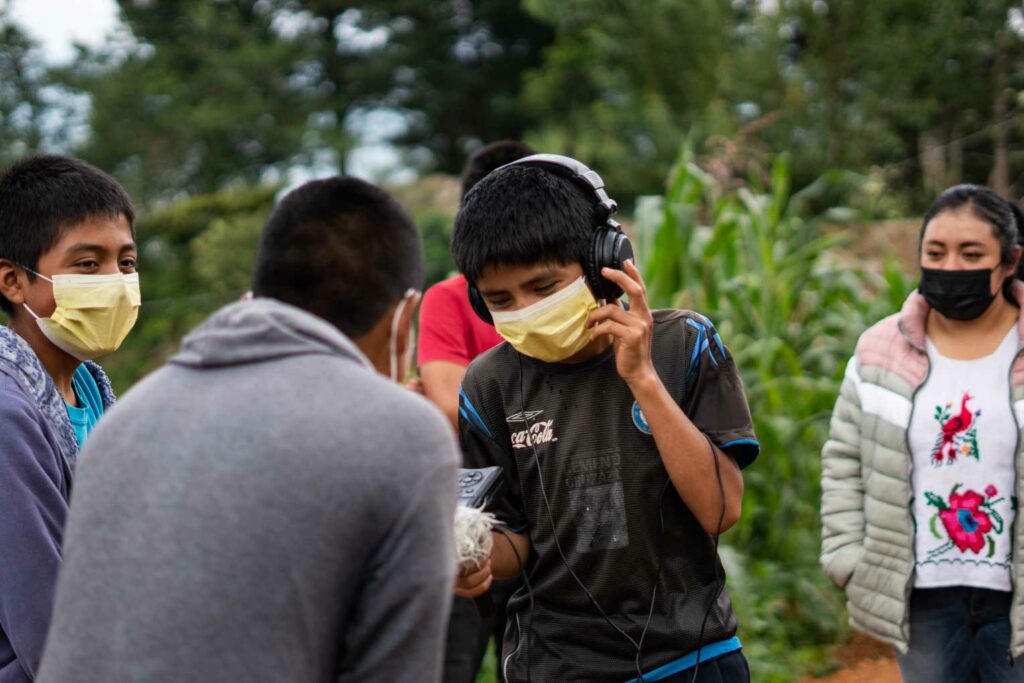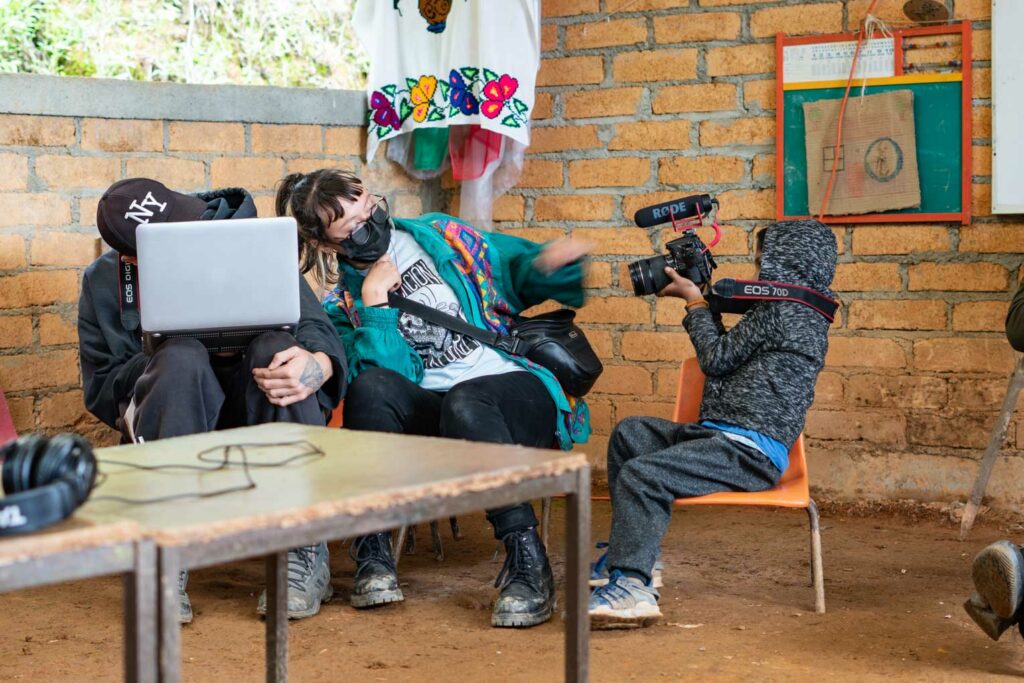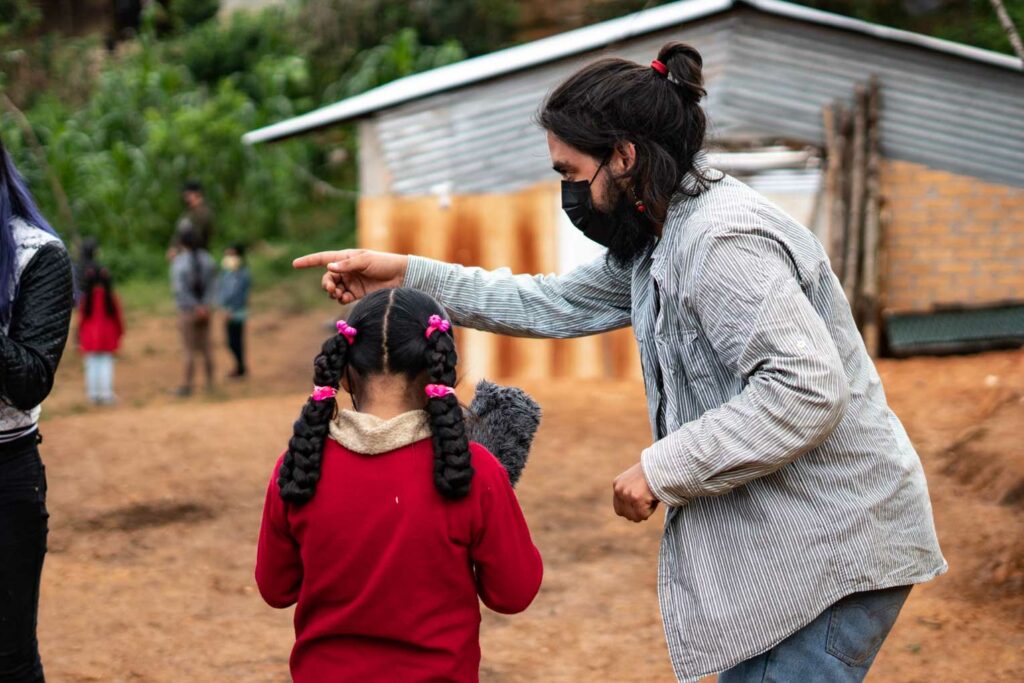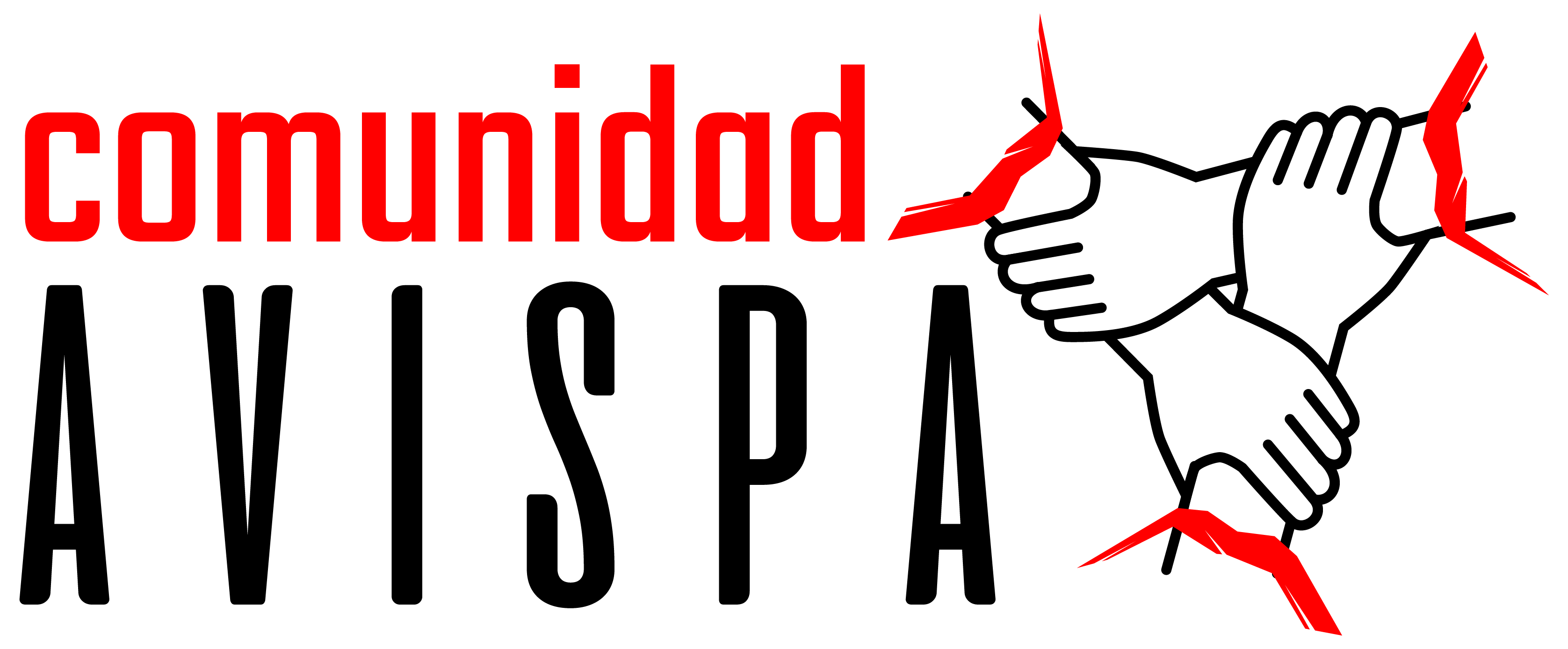Among the trees and the cornfields of the Sierra Mazateca in Oaxaca, Mexico, children of the Agua de Lluvia Community School run towards each other, delighted to be together, laughing and speaking their Mazatec language. They know that a new solidarity brigade is visiting their school and are excited because they’ve been told that they will learn how to make film and radio content.
The people teaching them these techniques are part of a solidarity brigade from Colombia and Chile that has visited several self-organized and autonomous initiatives in Mexico, eager to share their knowledge.
This school, which bears the name of the community, Agua de Lluvia, was built by the hands of the community’s children, youth, a teacher, and campesinos, each of whom have thrown their weight behind a different type of education. It is inspired by the autonomous schools created in rebel Zapatista territory in Chiapas. From that perspective, their thought and trajectory regarding the education of the community’s children has taken the road less traveled.
Nicolás Aguirre and Tierra Negra, the collective that he is a part of, have worked for three years with children in working class neighborhoods in Cali, like Comuna 18[1], where they have taught the use of communication technologies. “We consider communication to be an indispensable tool of struggle, as a response to disinformation and media manipulation. We have seen that children are very interested in communication, and with the little knowledge we have acquired along the way, we seek to strengthen ourselves together,” he states.
Aguirre prepares his audio recorder to share it with the children of Agua de Lluvia. He doesn’t think it takes too much specialized knowledge for communities to be able to produce their own communications. “In Colombia, we work with the voices of children, youth, and adults, because these three voices must be heard. We have put this into practice in assemblies, where the three voices are heard,” Aguirre says.

This is the first time the children of Agua de Lluvia have gotten their hands on video and audio equipment. They conduct interviews with each other, their teacher, their neighbors, and even the participants in the solidarity brigade. “This [school] has a lot of similarities to the work we are involved with in Cali. It’s an organizational initiative with children, it is an autonomous process built from scratch, from the heart,” says Nathalí Aguirre, also part of the Tierra Negra Cooperative in Cali.
The Fear of Autonomy
Rocio Escudero Rodríguez is a Mazatec woman who has worked as a teacher in multiple communities in the region over the last 30 years. After several political and social crises that Oaxaca has lived through since 2006, including the COVID-19 pandemic, together with her community she has sought to create an alternative educational space.
It hasn’t been easy, with few economic resources, not even furniture. Even the children and parents got involved to build the first classroom. In addition to this, they have been hindered by local political bosses. Even the teacher’s union disapproves of the project, considering it a threat.
Escudero says that “this is a community project and does not affect the teachers. On the contrary, it complements the children’s education. The difference is that this project is autonomous and here nobody receives a salary. The aim is to teach other things that the government schools don’t teach. We must not be afraid of autonomy.”

Juan Carlos Alvarado, a young co-founder of the school, is excited to be able to welcome another brigade to his community to share their knowledge. “Familiarity with these technologies is important for the children, because here in the community they are not accessible. It’s not possible for these children to have contact with people from other parts of Mexico, much less from other countries.”
Crescencio Juárez García, a farmer, has also helped in the construction of the school because he thinks it’s important for other possibilities to exist for the children. “Here, nobody receives a salary and the children don’t have to pay anything,” says Juárez. “It’s a commitment to the community. The school is still short on many things, like windows, tables, and other supplies, but we’re not asking for anything from the authorities or politicians. Even so, we see how it’s advancing, slow but surely.” He speaks with pride.
Learning by Doing
According to Camila Camacho, another member of the brigade, from Bogotá, Colombia, the workshops the group has shared are aimed at overcoming the limitations imposed by conventional forms of teaching, and in this respect differ from “professional” methodologies. “It’s from learning by doing, from play and chance. Using images to discover other forms of seeing reality and how dreams can be built from the imagination,” says Camacho.
Camila is part of the VER collective (Visuality, Epistemology, and Reality), which emerged due to the lack of academic spaces that address visual components in relation to the social sciences. “The kids always have something to say,” she says. “We think it’s only adults whose voices matter, but that’s not the case. We have to think about other narratives of another possible world.”

Iñaki Tiña of Santiago, Chile, who shares his knowledge of neighborhood and community cinema, lights up when he sees how the children use his camera. He knows first hand that self-organized projects are not easy. “There’s no money, supplies, or infrastructure, but hey, you’ve gotta do what you can with what you have,” says Tiña. He’s part of the Popular Film School and the Social and Antisocial Film Festival.
Camila concludes with a motto that has inspired the children she has worked with previously. “If we dream it, we create it. I believe that’s the key to everything. To learn that if we live by community self-organization, if we have community, it can enable projects of autonomy and resistance. This school is an example that it is possible to dream and build another possible world.”

[1] Translator: Neighborhoods within Colombian cities are called “comunas,” or “communes,” but this does not carry the same political connotation as it does in English or, indeed, in Spanish in other contexts.


